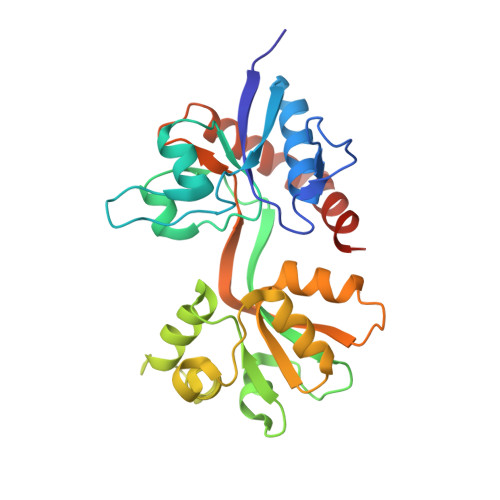Differences between the GluD1 and GluD2 receptors revealed by GluD1 X-ray crystallography, binding studies and molecular dynamics.
Masternak, M., Koch, A., Laulumaa, S., Tapken, D., Hollmann, M., Jorgensen, F.S., Kastrup, J.S.(2023) FEBS J 290: 3781-3801
- PubMed: 36128700
- DOI: https://doi.org/10.1111/febs.16631
- Primary Citation of Related Structures:
7Z2R - PubMed Abstract:
Ionotropic glutamate receptors are ligand-gated ion channels essential for fast excitatory neurotransmission in the brain. In contrast to most other members of the iGluR family, the subfamily of delta receptors, GluD1 and GluD2, does not bind glutamate but glycine/D-serine. GluD1 is widely expressed in the brain and the inner ear, where it is required for high-frequency hearing. Furthermore, it has been associated with schizophrenia, autism and depression. X-ray structures of the ligand-binding domain (LBD) of GluD2 have been published; however, no high-resolution structure is available for the ligand-binding domain of GluD1 (GluD1-LBD). Here, we report the X-ray crystal structure of the GluD1-LBD in its apo form at 2.57 Å resolution. Using isothermal titration calorimetry, we show that D-serine binds to the GluD1-LBD in an exothermic manner with a K d of 160 μm, which is approximately five-fold greater than at GluD2. Furthermore, we identify Glu822 as a critical determinant of receptor activation in GluD1 A654T. In contrast to studies on the GluD2 lurcher mutant A654T, we did not observe any effect of 1 mm D-serine on the spontaneous currents at mouse GluD1 A654T by electrophysiological recordings of Xenopus laevis oocytes as previously also reported by others. These results point towards differences in the structure and dynamics between GluD1 and GluD2. Molecular dynamics simulations were employed to address this observation, suggesting that the apo structure of GluD1 is less flexible than the apo structure of GluD2 and that Pro725 in GluD1 may affect the interlobe closure of the ligand-binding domain of GluD1.
- Department of Drug Design and Pharmacology, University of Copenhagen, Denmark.
Organizational Affiliation:

















